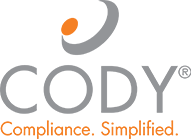Best Practices for Language beyond the CMS Model Language
The Centers for Medicare and Medicaid Services (CMS) templates for the Annual Notice of Changes (ANOC) and Evidence of Coverage (EOC) contain extensive model language that is required and must be used by every insurer. However, there are also numerous places in these documents where health plans have latitude and flexibility to use their own language to describe benefits, cost-sharing, coverage limits and so forth. These areas provide significant opportunities for health plans to better communicate with their members, and thereby positively impact the member’s experience.
Why Using Clearer Language Matters
Simply put, concise language helps members better understand their benefits. But, what does this really mean for the health plan? Consider the potential ripple effect that can be caused by confusing wording: members have to call Customer Service because they don’t understand their documents; too many members calling and overwhelming Customer Service could result in long wait-times and hang-ups, which can be negative markers against the plan’s Star Ratings; appeals and grievances increase, which can be costly and potentially problematic to resolve; and CMS may require an insurer to issue rebates to members if the amounts the insurer spends exceed the Medical Loss Ratio percentage for administrative tasks.
When one considers the consequences of confusing language in a health plan’s documents, it’s easy to understand why using the clearest language possible is ideal: less confusion, fewer calls to Customer Service, and fewer appeals and grievances and all the hassle and expense that come with them.
Examples of How to Improve Language
As a third-party manager and creator of ANOC/EOC documentation, our team at Cody sees how different health plans make these wording choices. Some insurers have found clearer ways to word these pieces of text than others. Based on our experience, we’ve gleaned best practices to create the clearest, cleanest and most effective communications to members for these documents. For example:
In an ANOC Changes to Benefits and Costs for Medical Services table, regarding “Comprehensive Dental”:
Example A: You pay $0 copay for covered services.
Example B: You pay a $XX copay for Medicare-covered services only. No supplemental coverage.
Often, members have two sets of possible benefits – one is the Medicare-covered benefits and the second includes the supplemental benefits not covered by Medicare. In Example A, a member may not know whether the plan is referencing Medicare-covered benefits versus supplemental. Example B specifies this.
In the same ANOC Changes to Benefits and Costs for Medical Services chart, regarding “Medicare-Covered Eye Exam”:
Example A: Routine vision exam: You pay a $0 copay per visit
Example B: Eye exam (routine annual): You pay $0 copay for up to one routine eye exam each year
Example B specifies coverage of an annual routine eye exam, whereas Example A does not indicate a frequency.
For Employer Group Waiver Plans (EGWPs):
CMS allows greater customization of ANOC-EOC language for plans to “more clearly describe the benefits available to employer/union group plan enrollees.” This greater flexibility for language customization is a double-edged sword.
One issue for insurers is that, generally, members pay their premiums to the employer group, not to the insurer. We recommend employers clarify in their materials that members should contact the group’s benefits administrator for questions on the premium amount. This clarification may reduce the number of calls to the plan’s Member Services group about where to pay the premium. It may also reduce instances of members incorrectly sending their premium payments to the plan.
How to Make the Most of Language Flexibility
The blue instructional text within the models and CMS’s ANOC-EOC instructions memo specify what standardized model language can be altered and where plans can insert their own information. We recommend health plans review the areas where flexibility is allowed, and consider what non-model language could be used in those locations to most clearly explain information to members.
Remember, wording that comes across as overly promotional, like “This is a great benefit!” is not allowed, even in areas where document alterations are permitted. The blue instructional text in the model documents provides guidance as to what can and should be included. Also, the updated Medicare Marketing Guidelines CMS releases every year is a helpful resource.
Health plan members care about what their plan covers and what they pay for their benefits. The EOC’s Chapter 4 Medical Benefits Chart and the Chapter 6 Part D charts are key sections for this information. We recommend health plans focus on improving language clarity within these sections, where permissible.
CMS has specific guidance about where model language can be altered. If a plan chooses to make alterations to model content that is excluded from CMS-allowed alterations, we strongly recommend that plans seek guidance from their Compliance staff or CMS prior to making the alterations.
In preparing your CY2018 ANOCs and EOCs, consider how your health plan can more clearly communicate with members. For more information, or to learn how the Cody team can assist with your AEP materials creation, please contact us.
